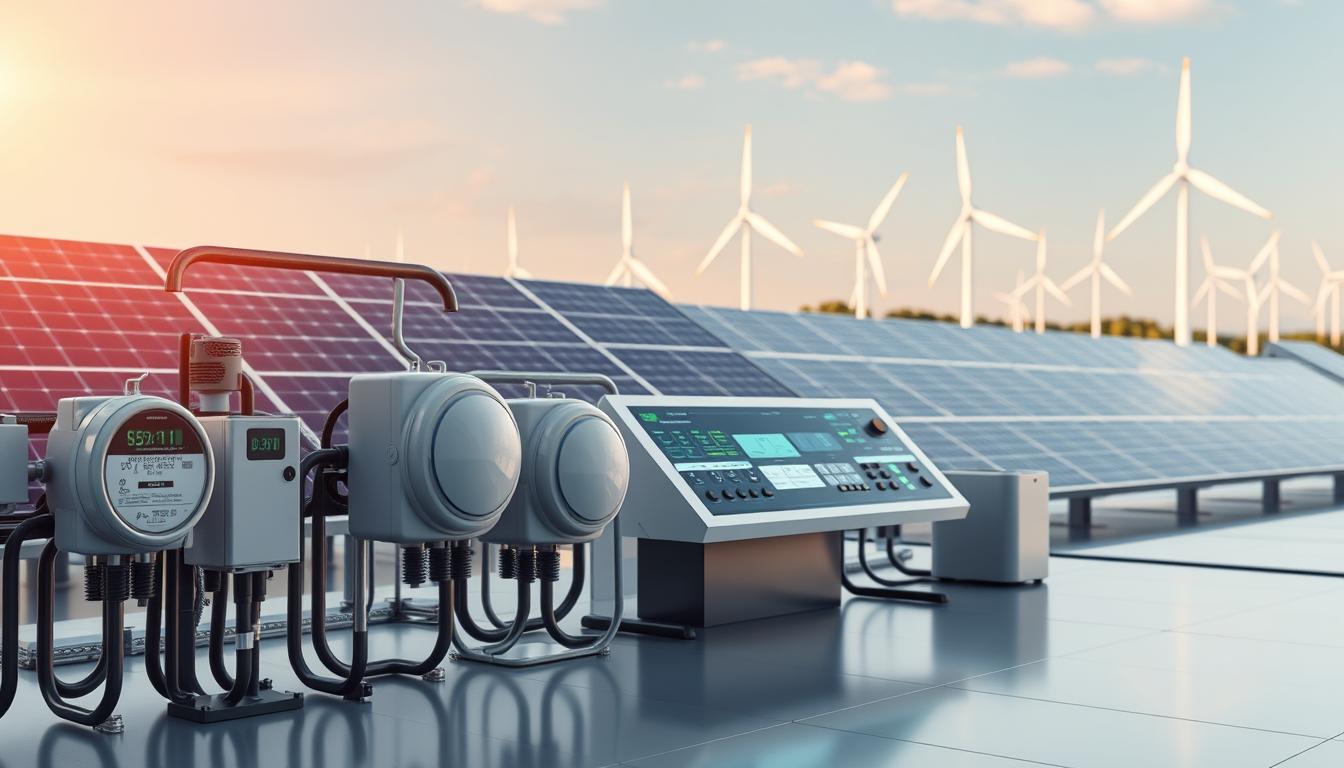Now Reading: Blockchain Energy Trading: Benefits and Applications
- 01
Blockchain Energy Trading: Benefits and Applications
Blockchain Energy Trading: Benefits and Applications
The way we power our lives is changing fast. Electric vehicles now account for 1 in 5 new cars sold globally, with countries like China and the UK pushing aggressive adoption timelines. This shift creates new challenges: charging happens everywhere from parking garages to shopping centers, not just gas stations.

Traditional systems struggle with these complex demands. Meter-based pricing and centralized grids weren’t built for real-time deals between solar homeowners, EV owners, and businesses. That’s where peer-to-peer networks step in, cutting out middlemen through automated contracts.
New platforms let neighbors trade excess solar power like eBay listings. A Texas homeowner can sell afternoon sun to charge a delivery van down the street, with payments settling instantly. Projects like Power Ledger in Australia and WePower in Estonia already prove this model works at scale.
Key Takeaways
- Peer-to-peer networks enable direct deals between solar producers and EV owners
- Automated contracts reduce errors and speed up payment processing
- Real-time pricing adapts to local supply and demand shifts
- Homeowners gain new income streams from surplus power sales
- Immutable records build trust in complex multi-party deals
Introduction to Blockchain Energy Trading
Today’s power grids face unprecedented strain as consumption patterns shift dramatically. Homes with solar panels now feed excess electricity back into networks, while factories negotiate real-time rates with wind farms. These changes expose flaws in systems designed for predictable, one-way energy flow.

Why Energy Markets Need Disruption
Legacy frameworks burden participants with excessive middlemen. A simple megawatt-hour sale might involve six intermediaries – brokers, exchanges, clearing houses – each taking fees. Manual settlements using fax machines and spreadsheets cause errors that take weeks to untangle.
Market distortions compound these issues. Subsidized technologies skew pricing, while low liquidity prevents fair value discovery. When Texas froze in 2021, some customers saw bills jump 10,000% – proof existing models fail under stress.
New participant roles demand fresh approaches. Over 20% of U.S. households now qualify as prosumers, both consuming and generating power. Traditional grids can’t handle this bidirectional flow or dynamic pricing needs.
Critical failures in current systems:
- 38% average markup from intermediary fees
- 72-hour settlement delays for routine transactions
- No verifiable tracking for renewable source claims
These challenges highlight why transparent verification methods gain urgency. As solar adoption grows 23% annually, markets need infrastructure that matches modern reality.
Fundamentals of blockchain energy trading
Modern power systems require infrastructure that supports instant verification and localized distribution. At its core, this approach connects solar-equipped homes, wind farms, and storage units directly with nearby users. Three elements make this possible: distributed generation assets, tamper-proof recordkeeping, and self-operating agreements.

Key Components and Benefits
Local generation sources like rooftop panels and community wind turbines form the backbone. By positioning these near usage points, transmission losses drop by up to 15% compared to centralized grids. Shared ledgers then track every kilowatt-hour transfer in real time.
This setup removes third-party fees while boosting trust. Producers see immediate compensation through automated systems. Consumers gain access to cleaner power at competitive rates. Neighborhoods with surplus solar can power local businesses during peak hours without grid intervention.
The Role of Smart Contracts in Power Transactions
Self-executing agreements handle complex conditions seamlessly. When a battery reaches 80% capacity, predefined rules trigger surplus sales to nearby factories. Payment releases automatically upon delivery confirmation from smart meters.
These coded protocols reduce billing disputes by 92% in pilot projects. They also enforce regulatory compliance – renewable certificates validate eco-friendly sources. As adoption grows, such systems could manage cross-border transfers between microgrids with zero manual oversight.
Building an Energy Trading Platform with Blockchain
Modern grids require solutions that connect solar arrays, wind turbines, and storage units directly with users. Distributed systems eliminate traditional bottlenecks by letting neighbors exchange surplus power like digital marketplace listings. This approach combines three critical elements: unchangeable transaction logs, live data streams, and self-managing agreements.

Leveraging Distributed Ledger Technology
Shared recordkeeping forms the backbone of these systems. Every kilowatt-hour transfer gets logged across multiple nodes, creating permanent proof of ownership. Participants verify transactions without third-party validators, cutting processing fees by 40-60% in pilot programs.
Integrating IoT for Real-Time Monitoring
Smart meters and weather sensors feed live updates into the network. When a home’s solar panels produce excess electricity during peak sunlight, automated protocols instantly match sellers with nearby EV charging stations. This data-driven approach reduces pricing disputes by 78% compared to manual billing cycles.
Tokenizing Renewable Energy Certificates
Paper-based green certificates become digital tokens that represent verified clean power generation. Producers trade these assets globally through standardized marketplaces, with ownership histories visible to all parties. A European wind farm could sell tokens to a California tech campus, ensuring transparent carbon offset tracking.
Virtual power plants demonstrate this synergy. By pooling rooftop solar and battery storage across neighborhoods, these networks stabilize local grids during demand spikes. Predictive algorithms adjust supply routes based on weather forecasts and usage patterns, creating resilient communities less reliant on centralized infrastructure.
Smart Contracts and Decentralized Trading in Energy Markets
Innovative tools are reshaping how communities exchange resources. European utilities like Enel SpA and RWE AG now test systems enabling neighbors to swap solar power without middlemen. These solutions prioritize direct connections between producers and users.
Automating Transactions with Smart Contracts
Self-executing agreements handle complex conditions seamlessly. When a household generates excess electricity, coded rules instantly match sellers to nearby buyers. Payments clear automatically through integrated meters, reducing billing errors by 83% in trials.
Facilitating Peer-to-Peer Energy Trading
Platforms like those from Vattenfall AB let users set custom prices for surplus power. Traders access decentralized order books anonymously, bypassing traditional brokers. This approach slashes transaction costs by 41% while maintaining regulatory compliance.
Real-time tracking bots now verify power sources across grids. Tennet Holding BV uses these tools to monitor renewable certificates, ensuring transparency from wind farms to urban consumers. Such systems prove localized networks can stabilize grids during peak demand without central oversight.
FAQ
How does decentralized power exchange improve market efficiency?
By enabling direct transactions between producers and consumers, decentralized systems reduce reliance on intermediaries. This lowers operational costs and enhances price transparency, allowing real-time adjustments based on supply and demand.
What role do automated agreements play in renewable power transactions?
Smart contracts automate verification, payment, and delivery processes, ensuring instant settlements without manual oversight. For example, solar producers can receive payments automatically when excess power is fed into the grid, reducing delays and disputes.
Can IoT devices enhance grid management in distributed systems?
Yes. IoT sensors track consumption patterns, grid performance, and storage levels in real time. This data helps balance load distribution, prevent outages, and optimize renewable resource utilization, such as wind or solar farms.
How do tokenized certificates support sustainability goals?
Tokenizing renewable certificates on a ledger ensures traceability and prevents double-counting. Buyers can directly invest in green initiatives, while producers gain liquidity by trading verified credits securely.
What risks exist in peer-to-peer power networks?
Fluctuating supply from variable sources like solar or wind can create instability. Advanced forecasting tools and battery storage integration mitigate these risks, ensuring consistent availability for participants.
Why is real-time monitoring critical for decentralized grids?
Instant data on usage and generation helps match local demand with available supply. Platforms like Power Ledger use this approach to reduce transmission losses and prioritize clean sources, cutting carbon footprints effectively.












